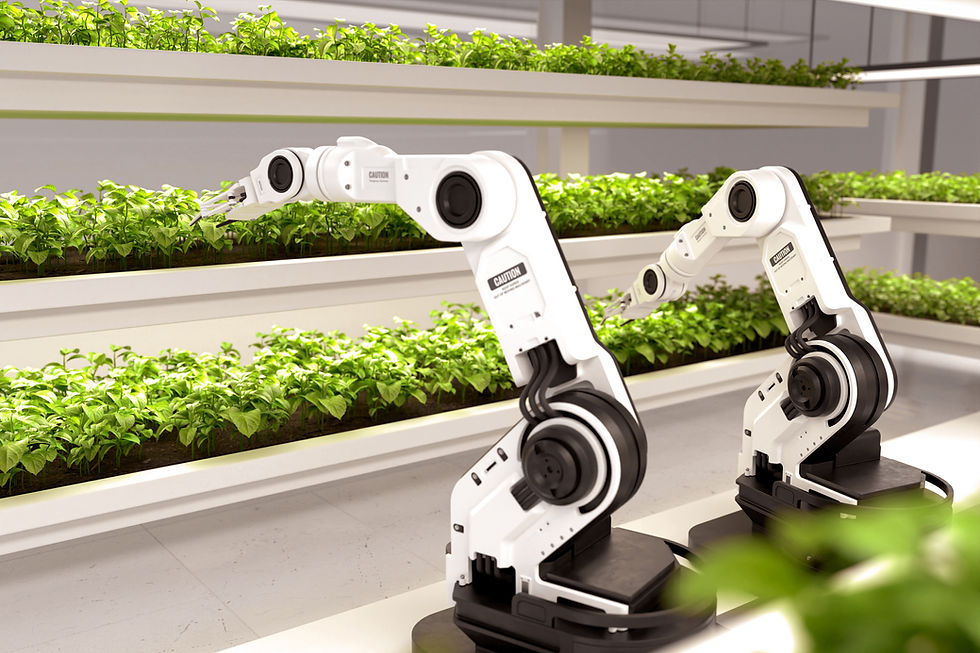Sustainability and AI: Driving Disruptive Innovation and Accelerating the S-Curve of Green Tech
- Priya Darshani
- Sep 4, 2024
- 4 min read

In today’s rapidly evolving landscape, the convergence of artificial intelligence (AI) and sustainability is redefining industries, pushing businesses toward more eco-conscious practices while reshaping traditional methods. AI, as a tool for disruptive innovation, plays a pivotal role in scaling sustainable practices, revolutionizing industries from energy to urban planning. This shift, guided by the principles of the S-curve of technology adoption, is accelerating the transition to a more sustainable and profitable future.
AI-Powered Disruption in Sustainability
Disruptive innovation, as outlined by Clayton Christensen, describes how new entrants with limited resources challenge industry incumbents by offering more accessible, cost-effective solutions. AI's application to sustainability aligns perfectly with this model. By harnessing AI, companies can transform inefficient, resource-heavy processes into streamlined, eco-friendly operations.
In renewable energy, AI-driven forecasting tools optimize energy production and grid management, significantly reducing waste and downtime. For instance, predictive analytics allow wind and solar farms to preemptively address maintenance needs, enhancing operational efficiency and cutting costs. AI’s ability to provide real-time adjustments marks a critical point in the S-curve of adoption for renewable energy technologies—moving from early adoption to mass market scaling as efficiency improves and costs decrease. This progress in renewable energy adoption disrupts the traditional fossil fuel markets, positioning AI at the forefront of the green energy revolution.
AI and the Circular Economy: Maximising Resource Efficiency
AI is a game-changer for the circular economy, revolutionizing how businesses manage waste and recycle materials. Advanced AI algorithms can now identify, sort, and process materials with unprecedented accuracy. Machine learning and robotics are optimizing recycling streams, identifying different plastics and metals, reducing contamination, and improving the overall quality of recycled products. This advancement has transformed recycling from a low-margin, resource-intensive activity into a high-value industry capable of competing with traditional material production.
This shift mirrors the early stages of the S-curve, where initial AI-driven innovations provide efficiency gains in resource management. As these technologies scale, we enter the exponential growth phase of the S-curve, where improved performance drives mass adoption. As AI continues to evolve, it will accelerate the circular economy's ability to reclaim materials and reduce waste, turning it into a critical component of global supply chains.
Smart Cities: AI Disrupting Urban Sustainability
AI is at the heart of the smart city movement, transforming urban management through real-time data and predictive analytics. Cities adopting AI-driven systems for traffic management, waste collection, and energy use are reducing emissions, lowering operational costs, and improving quality of life for residents. For example, AI-powered traffic systems reduce congestion and pollution by dynamically adjusting signals and rerouting traffic based on real-time conditions.
This technological evolution follows the classic S-curve model: early experimentation leads to rapid adoption as AI-driven solutions prove their value in reducing urban inefficiencies. The tipping point on the S-curve for smart cities is already underway, as more cities worldwide are adopting AI to meet sustainability goals and improve resilience. As smart city technologies advance, the scalability of AI will enable cities to reach new levels of sustainability.
The S-Curve: Mapping AI's Impact on Sustainability
The S-curve model, widely used to describe the adoption of new technologies, is crucial for understanding how AI accelerates sustainability efforts. At the beginning of the curve, innovation is slow and adoption rates are modest as technologies are tested and refined. As AI technologies mature and demonstrate clear value—such as reducing costs in renewable energy or improving efficiency in recycling—adoption accelerates, pushing industries into the rapid growth phase of the curve.
AI’s role in driving sustainability is currently positioned at the critical inflection point of the S-curve. Renewable energy systems, circular economy solutions, and smart cities are all beginning to experience exponential growth as AI innovations prove their viability at scale. Companies that harness AI now stand to lead this surge, capturing market share as demand for sustainable solutions spikes.
Challenges and Ethical Considerations
Despite the considerable potential for sustainability that AI offers, it also brings about challenges that must be tackled. The need for substantial computational power in AI systems raises worries regarding energy usage. Additionally, the extensive implementation of AI-powered automation may lead to job displacement in specific industries, like logistics and waste management.
Addressing these challenges is essential to maintaining AI’s role as a force for good in sustainability. Companies must commit to powering AI infrastructure with renewable energy and developing strategies to support workforce transitions in an AI-driven economy.
Unlocking the Future: AI as the Engine of Sustainable Innovation
AI is not just speeding up the implementation of sustainable practices, but also revolutionising entire sectors, leading to a more environmentally friendly and productive future. Through optimizing energy consumption, enhancing recycling processes, and improving city management, AI is assisting businesses and governments in achieving sustainability objectives at an unprecedented pace.
As we move further along the S-curve, the transformative power of AI will only grow. Companies that invest in AI-driven sustainability solutions today will be the ones driving tomorrow’s green economy, enjoying both competitive advantage and regulatory compliance in an increasingly eco-conscious marketplace. The synergy between AI and sustainability is no longer a distant vision—it's the disruptive force reshaping industries and driving the future of sustainable growth.


留言